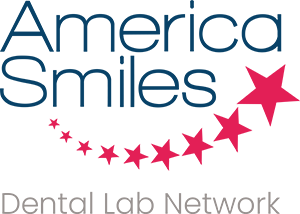With the increasing adoption rate of intraoral scanners grows dental labs and clinicians are realizing added value in leveraging the technology.
Here are a few reasons why your laboratory will benefit from using intraoral scanners.
1. You position yourself as a valuable asset.
As digital technology reinvents the laboratory marketplace, laboratories have the unique opportunity to reinforce their position as a valuable resource for clinicians. Leading labs have been using digital technology for over a decade. This experience allows them to have a thorough understanding of the different types of scanners on the market and enables them to assist clinicians with the new technology in order to create a seamless transition from analog to digital technology.
Each intraoral scanner has slight variations that will require a clinician to use a different workflow as they switch between scanners or an analog workflow. There is an intraoral scanner appropriate for every lab, and some labs will find that their favorite scanners work well with the lab’s CAD/CAM system. Clinicians should be cautious that open systems are truly open and can be used by anyone at any time, rather than requiring additional fees to access the files. Reputable laboratories should ensure that expensive pieces of equipment will operate as advertised, and it is recommended that clinicians ask for detailed information regarding equipment processes and functioning systems.
2. Rapid Turnaround Time
In a traditional analog workflow, the lab would have to wait until they received the impression results in the mail. However, with an intraoral scan, data arrives within minutes of the scan being sent and allows the laboratory to begin making the impression immediately. This gives laboratories with a guaranteed turn-around time a greater time allowance in order to finish their impressions.
3. Precise Dimensional Accuracy
Intraoral scanners provide unparalleled accuracy compared to traditional impressions. The dimensional accuracy of intraoral scan data has progressed to the point of counting microns. Accuracy measurements from high-end intraoral scanners on an acrylic tooth model are about 6.9 μm whereas traditional impressions are under 40 μm. The increased accuracy of an intraoral scanner helps the restorative team provide better service in the following two ways: (1) the clinician will see reduced chair-time as the restorations have a better fit, and (2) the remake percentage will decrease from approximately 4% to under 1%, thus saving time. These factors result in less cost for both the clinician (less chair time) and the laboratory (less remakes). Additionally, newer scanners have advanced shade-taking capabilities resulting in fewer restorations due to shade adjustment.
4. Increased Workflow Options
Digital communication allows the planning process to become increasingly predictable for more complex cases. For example, an implant surgery could be planned virtually. Ideal implant placement planning leads to better restorative options. Custom provisional options would be available at the time of surgery. Lab technicians may include a diagnostic wax-up for crown and bridge cases. These can be done by digitally creating files that are accessible when a case comes back for restorations. The advanced communication abilities that accompany intraoral scanners assist clinicians in the surgery process and add value to laboratories working relationships with their dental practice clients.
5. Seamless Communication
By far the greatest advantage of digital impressions is the seamless communication between the laboratory and the clinician. The entire team (surgeon, restorative doctor, and technician) can begin to examine and decide what options are best for the patient. Location is no longer an obstacle with file sharing readily available and accessible from anywhere, even on a smartphone. Thanks to digital intraoral scanner technology, lab technicians now have a participating voice in the dialogue about restorative options.
 June 16 - July 11, 2025
June 16 - July 11, 2025

